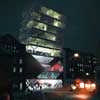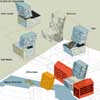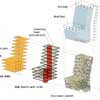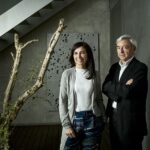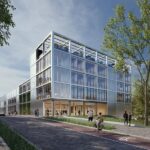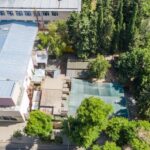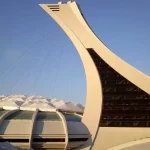The Calls, Leeds Design Competition, Yorkshire Building Contest, Architect, Property, Image
The Calls Leeds : Architecture Contest in Yorkshire
Leeds Architecture Contest, northern England, UK
15 Aug 2010
The Calls Competition
The Calls Leeds
ANALYSIS OF CONTEXT AND INSERTION OF NEW PROGRAM
The competition site is located close to the main transport, cultural facilities and, at the same time, a five minute walk to the old industrial area. The location has good potential as a center for offices, business, conferences and leisure. Commercial and catering activities, which are intense in the city center, start to fade along the borders of the river. New commercial programs together with bars and restaurants will attract both the people who work on the opposite side of the river and those who live and work in the center.
Before the Brewery wharf was built there were few conference venues close to the site. The introduction of new conference spaces will establish the area as an ideal place for business and meetings. There are few Spa centers in Leeds and new ones close to the site are reported to be lacking in service. Wellness activities integrate perfectly in business and city center environments.
Visual Landmark VS Periscope
Tall buildings, being visible from long distances, act as reference points but have no relation with the site context and with human scale. Landmarks do not interact with the city, they simply express their presence. Our building functions as a periscope. Through the inclination of its glass facades the reflections of the city will be visible around the surrounding building area.
Basement
A ramp connected with The Calls allows access to the basement floor by car. The carpark has the capacity for 10 parking spaces that could be rented or sold to the tenants.
Ground floor
The building floats on the vertical cores leaving two open corridors on the sides allowing free access to the Calls Landing building and to the riverside terrace.
A transparent glass skin wraps the bar area providing for maximum natural light penetration and transparency. The street is visually connected to the river. The bar increases public use of ground floor and of the terrace.
First floor
The restaurant and lounge bar have direct views of the river and the city while the bookshop, on the road side, attracts the people walking along The Calls.
Second floor
A large open space facing the river could accommodate up to 200 people for conferences. The space could be divided in two smaller conference rooms with a sliding wall.
Third floor
The functions are divided in two halves. The gym is orientated toward the city center while the intimate space of the wellness area and the pool are situated on the opposite side.
Fourth floor
This is one of the most privileged floors of the building. Half of the surface is occupied by a gym and a bar and the other half is an outdoor terrace and pool with incredible views of south Leeds and the river.
Typical office plan
From the fifth to the ninth level the floor area is designed for office use. The floor is free from any structural elements and could be arranged according to different distributions. Due to the block height there is a 360º view on all the city.
ORIENTATION
The strategy of bioclimatic design is based on the excellent orientation of the main facades (north and south) of the building.
THERMAL INSULATION
On south and north facades a low-e glass and high thermal insulation provide for a high heat retention and also efficient use of natural light.
SOLAR PROTECTION and GREENHOUSE EFFECT
A solar protection system on the south facade allows solar radiation in winter and intermediate seasons and protects them in the two months following the summer solstice. In this way the building has clear different behavioural patterns during the summer and winter time. The other building facades and the roof, are mosly opaque in order to reach a high level of thermal insulation and minimize energy consumption.
CROSS VENTILATION
The double block shape of the office block allows a good natural cross ventilation and reduces the energy required for cooling systems.
WATER GATHERING
The roof and tank storage of rainwater cover the needs of non-potable water (wc tank) of the building.
ENERGY CONSUMPTION
The construction process of the building will incorporate the largest number of components supplied by local dealers, recycled elements and lower lifecycle CO2 emissions products.
STRUCTURAL CONCEPT
The main aim of the stuctural design was to provide maximum flexibility of floor surface and avoid large structural elements. The main supporting system is a light structural skin called diagrid which wraps the built volume. The scale of the diagrid varies according to load distribution and building geometry and its density is calculated through a step by step process.
The floor slabs, the perimetral and transversal beams, the elevator/stair cores complete the structural system. The diagrid optimizes the use of metal elements through the concentration of matter in the most loaded zones and leaves large areas free of structural elements.
TESSELLATION AND OPTIMIZATION
The diamond tessellation of a diagrid base unit acts as a latticed load-bearing structure. Given a set of loads and an homogeneous frame, a structural software calculates the stress map. The less efficient elements (in grey) can be isolated and eliminated. With the new structure a new calculation is launched and a new configuration of inefficient elements appear. This step by step process transforms the original structure configuration into a more efficient gradation that is the result of the building geometry and program load distribution. The floor slabs are connected to the transversal beams which spreads the load into the diagrid intersection.
External reference: Massimo Tepedino, Nacho Toribio, Carmelo Zappulla
Structure: Sergio Carratala
Sustainability : Josep Escarrá
The Calls Leeds Competition images / information from External Reference Architects
External Reference Architects
Architect studio based in Barcelona, Spain
Externalreference is an architectural office involved in design and research in the fields of interior design, architecture, and landscape design.
Interested in generating intensity nodes the office is currently involved in research and design in the fields of commercial spaces and temporary stops as shopping galleries, hotels, temporary accommodations and cultural events.
Based in Barcelona the office establishes work collaborations with international professionals coming from different fields as graphic design and art.
More of a professionals net than an office Externalreference is constantly questioning conventional configurations and solutions in order to engage, speculate and innovate.
Directed by Massimo Tepedino, Nacho Toribio and Carmelo Zappulla Externalreference offers a broad range of design strategies with the aim of pushing the boundaries towards new outcomes.
Looking for the unexpected the office team works on external factors as client needs, budget limits, sustainability as driving forces for the design.
Realized and under construction projects have been developed in Spain, Italy, UK, Germany, France and Russia.
Externareferencel won several prizes participating in international competition including first prize with the project Le corti di Buenos Aires, Milano for the renovation of 22000 sqm buildings which includes a shopping mall, an hotel and 50 apartments and developed the winning proposal for the Toulouse Aerospace Campus in collaboration with Foreign Office Architects.
Interested in the materialization of the projects the office team is constantly researching through lecturing and teaching at IED, Instituto Europeo del Diseño, Barcelona, ELISAVA and UIC, Universidad Internacional de Cataluña in Barcelona; NABA, Nuova Accademia di Belle Arti, Milano, GJU, German-Jordanian University, Amman, and in collaboration with Welsh School of Architecture Cardiff University.
36 The Calls, Leeds – Winning Design by Fletcher Crane Architects

picture from the architect
36 The Calls, Leeds
Location: The Calls, Leeds, West Yorkshire, England, UK
Architecture in Yorkshire
West Yorkshire Architectural Projects
Yorkshire Architecture Designs – chronological list
Leeds Buildings – Selection
Victoria Gate
Architects: ACME
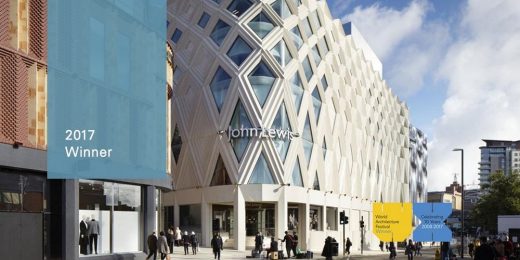
image courtesy of Bennett Architectural
Victoria Gate Leeds Building
Emerald Headingley Stadium Redevelopment
Design: DLA Architects; Structural engineering design: TRP Consulting
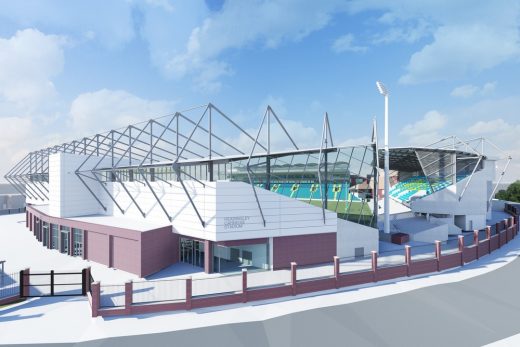
image courtesy of architects
Emerald Headingley Stadium Redevelopmen
Bridgewater Place tower : Leeds’ tallest building – 110m high by Aedas
Bridgewater Place
Leeds Town Hall by Cuthbert Brodrick
Leeds Town Hall
Comments / photos for The Calls Leeds Architecture Competition page welcome
Website: The Calls Leeds

